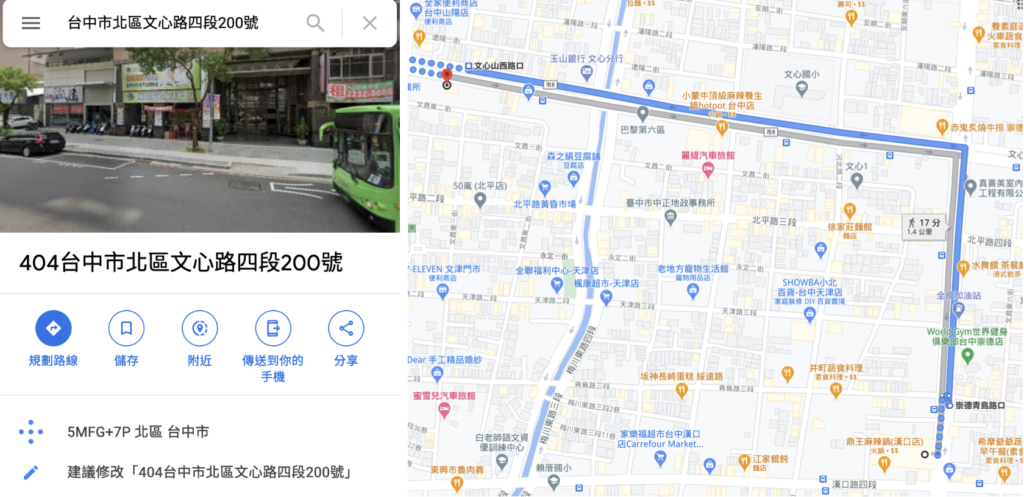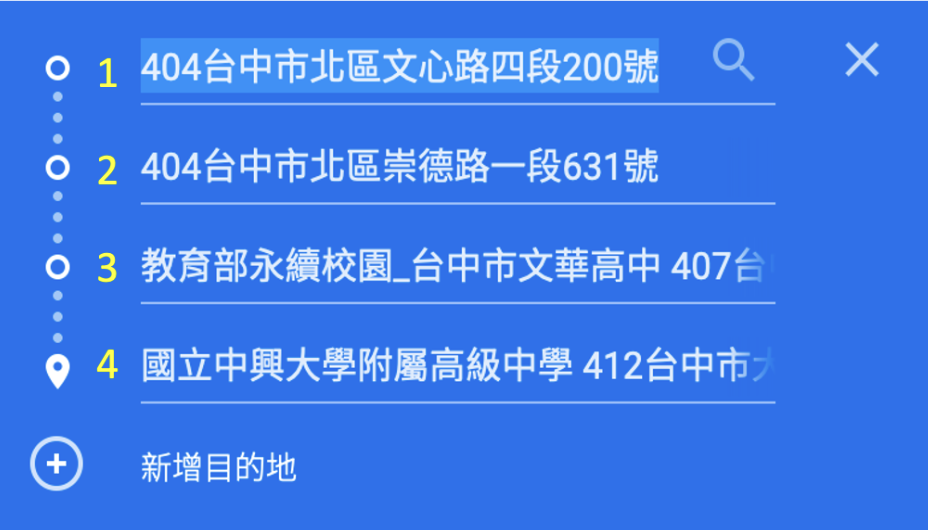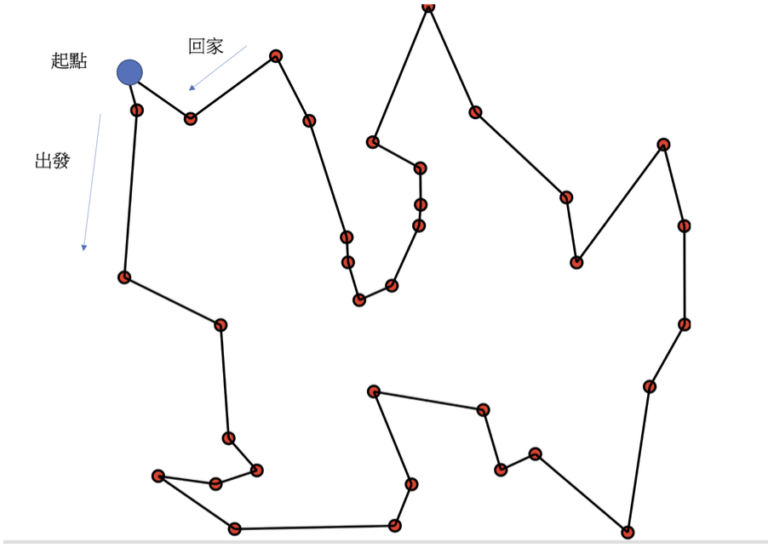A.I.R is a dispatch and scheduling SaaS/PaaS platform developed by Singularity Infinity. Whether we’re at trade shows, client meetings, or other events, we often hear the same reaction: ‘Oh, you optimize routes for fleets? Doesn’t Google Maps already do that?’
This highlights a key misunderstanding—what exactly do terms like ‘dispatching’ and ‘optimal routing’ mean? If my definition of ‘optimal route’ differs from yours, then we’re not really speaking the same language.

When most people hear the word “best route”, they intuitively think of “Plan Route” on Google Maps.
“Route planning” on Google Maps is about finding the optimal route between two points, as in the example above. However, AI is helping delivery trucks plan routes to reach multiple delivery points as quickly as possible. This answer usually fails to convince the audience.
:『Google Maps can also do multi-point planning!』

The audience imagines the thing above.
: “Isn’t this the same as what you did?”
Google Maps’ multi-point shortest route planning still aims to find the optimal route between two points. While users can add locations using the “Add Destination” function on Google Maps, Google Maps still provides the optimal route from point to point, following the order you provide them.
But the problem with a delivery truck isn’t “how do I get from point to point?” Rather, if I want to deliver from point 1 to point 2, 3, 4, and then back to point 1, what’s the order of 2, 3, and 4 to complete the delivery the fastest?
Did you notice? This is not the multi-point route planning of Google Maps at all! What we mean by “optimal route” is “finding the order of delivery points.”
So Google Maps can’t provide the “optimal route” that logistics trucks need?
Wrong! Google Maps can do it, but you can’t find it!
Google Maps launched waypoints optimization in the third quarter of this year, which allows it to perform a very small portion of A.I.R. functionality. You can think of waypoints as delivery points.
According to the Google Maps API documentation, the Directions service, by default, calculates the best route based on the order of waypoints provided by the user. If the user wants to find the optimal order of these waypoints instead, an additional parameter must be specified. This functionality offered by Google Maps essentially addresses the Traveling Salesman Problem (TSP) in graph theory.
As depicted below


Is it difficult to calculate the best order?
This problem is a CPU-intensive one. For example, if the salesperson has to visit 37 customers, there are 37! possible combinations (press the calculator button; it should give you an E). 37! is roughly 1.37 x 1043.
This number is astronomical, because the total number of atoms in our visible universe is about 1080 atoms, and the number of route combinations for a salesman to visit 37 places is as many as 1043.
If we look at the major domestic logistics fleets, an average 3.5-ton JINDA truck delivers to 100 locations a day, which means 100!=9.3×10157 possible combinations.
Mathematicians and computer scientists have always sought to improve computing performance by solving combinatorial problems. However, these problems are so complex that even today’s most powerful supercomputers would take tens of thousands of years to solve certain problems.